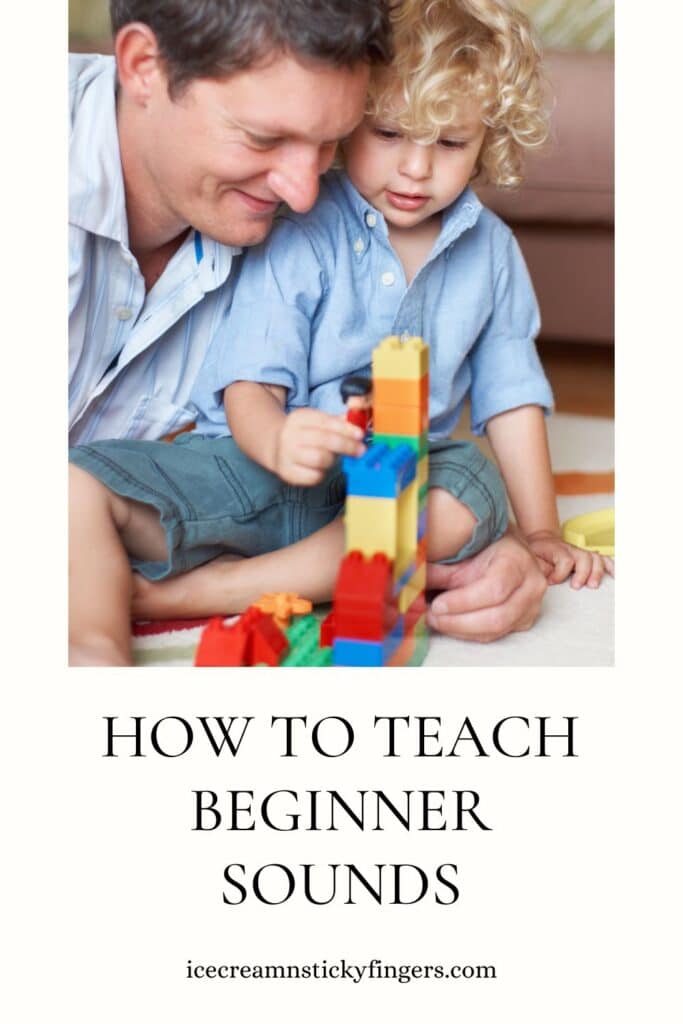Do you know how to teach beginner sounds to kids? Teaching beginner sounds, especially in the context of language and speech development, is crucial for effective communication. Here are some steps and strategies for teaching beginner sounds:

Assess the Level
Before you begin teaching, assess the learner’s current level of understanding. Are they completely new to the concept of sounds, or do they have some basic knowledge?
Start with the Alphabet
If the learner is completely new, start with the alphabet. Introduce each letter and its corresponding sound. Use visual aids like flashcards or alphabet charts to make it engaging.
Identify Target Sounds
Start by identifying the specific sounds you want to teach. Typically, you’d begin with consonant and vowel sounds that are easier to produce and distinguish.
Articulation and Placement
Teach students where and how to position their tongue, lips, and airflow to produce the target sound. Use mirrors and visual aids to help them understand the mechanics.
Isolation
Start with the target sound in isolation, meaning it’s pronounced without any surrounding sounds. Have the student practice saying the sound by itself, such as “mmm” for the /m/ sound.
Auditory Discrimination
Help students distinguish between the target sound and other sounds. You can do this through listening exercises, such as asking them to identify the sound in words or phrases.
Minimal Pairs
Use minimal pairs, which are pairs of words that differ by only one sound (e.g., cat vs. bat). This helps students hear and practice the target sound in a meaningful context.
Word Families
Introduce word families (e.g., -at family with words like cat, hat, mat) to show how changing the beginning sound creates new words.
Phonics Rules
As the learner progresses, introduce basic phonics rules, such as silent letters or digraphs (two letters representing one sound, like “sh” in “shoe”).
Syllable Practice
Move on to using the target sound in syllables (e.g., ma, me, mi, mo, mu for the /m/ sound) and simple words that contain the target sound.
Use Mnemonics
ZMnemonics can be helpful. Associating a sound with a familiar word can make it easier to remember. For example, “A” can be associated with “apple” for its /a/ sound.
Phonemic Awareness Games
Play games that focus on phonemic awareness, such as rhyming games, sound blending (e.g., /b/ + /a/ + /t/ = “bat”), and sound segmentation (identifying individual sounds in words, like /c/ /a/ /t/ for “cat”).
Word Practice
Progress to practicing the target sound in words and encourage students to use these words in sentences. Use flashcards or word lists to make this engaging.
Visual Aids
Utilize visual aids like mouth diagrams, videos, or books with pictures that show how the mouth and tongue move when producing the target sound.
Use Technology
Don’t be afraid to use educational apps and online resources designed for teaching phonics and beginner sounds. Many interactive apps engage children and make learning fun.
Storytelling and Songs
Incorporate stories and songs that emphasize specific sounds. Repetition in a fun context helps reinforce the learning process.

Reading Books
Choose books that are appropriate for the learner’s level. Reading aloud together can help reinforce the sounds they’ve learned.
Modeling
Be an effective model for the sounds you are teaching. Pronounce the sound correctly and clearly for the student to imitate.
Practice and Reinforcement
Provide plenty of opportunities for practice. Repetition is essential for sound development. Regular practice through games, drills, and activities can be engaging.
Feedback and Correction
Correct any errors gently and provide positive reinforcement when the student pronounces the sound correctly.
Recordings
Record the student saying the target sounds and play it back for them. This allows them to self-assess and make improvements.
Multisensory Approaches
Engage multiple senses when teaching sounds. For example, you can use tactile activities like forming letters with playdough or sand, or even use music to reinforce the sounds.
Progress Monitoring
Keep track of the student’s progress over time. Celebrate their achievements and adjust your teaching strategies if needed.
Patience and Encouragement
Be patient, as learning to produce new sounds can be challenging. Encourage the student and create a positive, supportive learning environment.
Consult a Speech Therapist
If you notice persistent difficulties or suspect a speech disorder, consult a speech-language pathologist or therapist for professional guidance.
Remember that teaching beginner sounds may vary depending on the age of the learner and their individual needs. Adapt your approach to suit the student’s developmental stage and abilities.








This is some great advice. I remember making all sorts of noises at my kids! They seemed amused.
I need to share this with my daughter. She should try this with her daughters.
This is so great for those learning beginning sounds. I’ll have to share this with a few people I know who are having kids soon.
Teaching beginner sounds to babies and toddlers is crucial for language development. It helps them communicate effectively and build a strong foundation for future language skills so these are great tips to get started and keep on with it.
These are great tips for parents or teachers to teach beginner sounds. My nieces would enjoy reading this as they both have one-year-olds.
I showed this to my Sister who just popped out my niece! I’m sure this was super helpful to plenty of new moms!!
I recall making all kinds of sounds and noises when my kids were learning to talk; and then phonetics for when they were learning to read.. great tips for all parents with kids at that stage
Such a great list. I loved singing to my son when he was a baby and a toddler. Also, bought him a lot of books and read them to him.
This is such a great breakdown of teaching sounds! It seems so complicated when it really isn’t